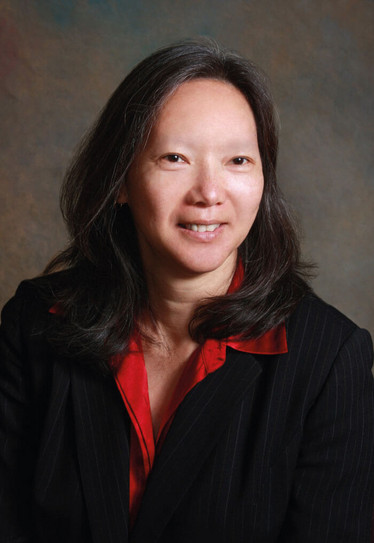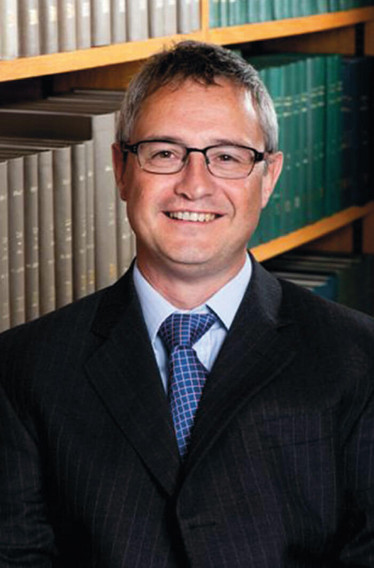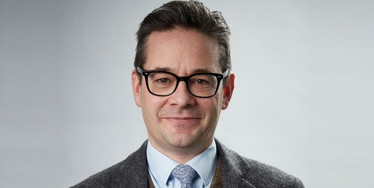
Gurus of Brain Oncology
Three leading lights in the field of neuro-oncology share what inspired them, how the field has evolved, and what challenges and opportunities lie ahead.
The Gurus

A neuro-oncologist specializing in the treatment of adult brain tumors, Susan Chang is Director of Neuro-oncology at the University of California San Francisco (UCSF) Brain Tumor Center. Outside of the clinic, Chang is involved in several studies that use imaging technologies as experimental approaches to diagnosis and therapy. Chang is also medical director of UCSF Neuro-Oncology Gordon Murray Caregiver Program, which aims to address the needs of family members and others who care for patients with brain tumors.

Practicing neurosurgeon Colin Watts runs a dedicated neurosurgical-oncology research clinic that supports clinical trials and collaborative translational research. He also leads the newly established Brain Cancer Program at the University of Birmingham, where his research aims to improve the treatment and survival of patients with glioma by tackling the molecular genetic heterogeneity present in individual tumors. His clinical practice specializes in neurosurgical oncology with a particular interest in intrinsic gliomas and cerebral metastases.

Director of the CRUK Cambridge Centre, Richard Gilbertson trained as a pediatric oncologist before moving to the US in 2000. There he served as Co-leader of the Neurobiology and Brain Tumors Program at St Jude Children’s Research Hospital in Memphis, Tennessee. In 2014, he was appointed as Scientific Director of the hospital, before moving back to the UK to establish a lab at the University of Cambridge. His research focuses on better understanding the link between normal development and the origins of cancer, with a particular interest in brain tumor etiology.
On finding inspiration…
Susan Chang: “Returning from a neuro-oncology elective in San Francisco as part of my medical training, I was really attracted by the opportunity to combine two of my loves: working with and taking care of patients, and the chance to see first-hand how treatments move from basic science into translatable work. That approach has kept me engaged with basic science and allowed me to work with some young, passionate people, who are experts in their own fields. What excites me in general about brain tumor research is the collaborative and multi-disciplinary nature of the field. It’s really about how clinicians and scientist can work together to inform each other. Combining knowledge allows us to focus on developing new treatments for patients.”
Colin Watts: “An interest in stem cell-based approaches to treating neurodegenerative disease quickly morphed into an interest in malignant transformation. I became fascinated by how we can visualize brain tumors – or cancers in general – as an ecosystem, with multiple populations fighting for resources; I was interested in how we might apply Darwinian principles. And that lead me to pursue the idea that, to truly beat cancer, we needed to better understand tumor heterogeneity and the biological diversity of the disease – how it changes, both with time and in space. Different parts of the tumor are different in the same way that different areas of the planet are different, with different animals occupying the same biological niches.”
Richard Gilbertson: “I’m a pediatric neuro-oncologist by training. I began my life as a medical doctor, but in something like my second week of training (in 1986), whilst I was undertaking what must have been my first real attachment, I met the parents of a girl called Katie, who was dying of medulloblastoma. I was incensed that we couldn’t do anything for this child. That same week I was visiting the Tate Modern Gallery in London. There’s a famous painting there called ‘The Doctor’; it’s an image of a doctor looking over a distraught family as he is unable to do anything to help their ill child. From that moment, I was convinced I wanted to work on medulloblastoma. And I have ever since.”
On emergent technologies…
Watts: “I think the strategy going forward must be to bring in multiple technologies, including engineering, artificial intelligence, and simulation, in combination with biological techniques. We also need to look to develop new technologies that will allow us to pool and share data, going beyond firewalls. Wearable apps that allow us to adapt treatment to changes in the disease profile will also be important. But most importantly, but probably most difficult for the field, will be the development of technologies that are cheap, easy to use, and accessible. Ideally, these approaches, combined together, will allow us to detect these tumors before they become too complex and late-stage – something all too common at the present time.”
Chang: “A major element of my research is focused on the use of imaging technologies to better inform us about the biology of disease. Using metabolic imaging and dynamic metabolic imaging, based on carbon-13 imaging, has a lot of potential. Ideally, we’d be able to detect differences between normal tissue and that of the tumor, helping us to understand more about how much tumor is actually present in the brain; something that is difficult to quantify with current approaches that are dependent on postoperative imaging.
"Other methods, such as PET scans and other imaging modalities, where you can target specific proteins that are present in the brain in contrast to the tumor are really beginning to emerge. There are a number of challenges associated with these technologies – not least optimization. At the moment, they can be hugely onerous or cumbersome to the patient, which will require adaptation. Another issue is reproducibility. The most challenging aspect of all is replication of a technique to other sites. If a technique is so sophisticated that you can’t deploy it at other institutions then it doesn’t really help all that much.”
On broader aspirations…
Watts: “Looking forward, we’ll need to establish two parallel streams. The first will be the creation of the architecture – the necessary networks of clinical centers with the right expertise to develop technologies, recruit the right patient populations, and collect tissue. It won’t be easy – it’s not sexy by any means – but it’s necessary. In fact, it’s vitally important to get the job done properly. Having this framework would allow us to focus more on scientific questions.”
Gilbertson: “The UK, in particular, is quite fortunate that it already has what many consider the foundations of the world’s best community of neuroscientists. These people understand how the brain knits together and how it is formed. They are some of the leaders in a range of neurological conditions, from Alzheimer’s to ALS and MS. The same mechanisms underlying the pathology of these diseases will most certainly have some similarities to that of brain tumors. That community is producing amazing scientists – the challenge will be to drive their interest towards brain tumors. We’ve begun to see that people are beginning to establish their own groups in the field, which is encouraging. They’ll certainly benefit from the expertise in neuroscience that has been established over several decades.”
Chang: “There will be a number of challenges along the way. For example, what is considered robust information? How can we reduce the time it takes to bring testing to the patient, to push these discoveries towards patients quicker? These tumors are also very uncommon, so how do we efficiently access the value of new therapies, and how can we ensure that we produce valid conclusions? Much of the work that is done in early phase trials seems very promising but when it goes into larger, randomized trials, the majority of results are negative. We’ve been burned in oncology in general, but particularly in neuro-oncology, where what we thought was a promising breakthrough was anything but.”
Watts: “Thinking about trials, the other aspect of the problem is the regulatory and policy environment. If we are looking to do trials differently, then we need to understand – and more importantly, regulators need to understand – that working with patients with very uncommon cancers will require a different approach. It will have to be based on more adaptive designs, rather than larger, randomized control trials. To do this will require the science to be done robustly, and for us to embrace the use of digital model systems to control for the complexity of the disease.”
On the role of the wider community…
Chang: “Charities and other organizations provide enormous value. Primarily they are a community; many are founded by patients and families, and this has the effect of raising wider awareness of the importance of what these diseases mean to patients and their families. That itself is really critical – to share knowledge and experiences across all areas of expertise.
"Through fundraising, charities are also in a somewhat unique position of being able to support potentially high-risk strategies and novel therapies. Those are typically not given much support by governmental agencies; in part, because they want to make sure that their money is well invested and backed up with lots of preclinical data. Of course, brain tumors are not very common, so centralization of samples, imaging technologies, and data collaboration is critical. That kind of infrastructure can be supported by charities."
Watts: “Following the death of Dame Tessa Jowell in 2018, the landscape has really shifted. Part of her legacy has been a raising of awareness and a better appreciation from us all of the role of advocacy in advancing the objectives of the field. Patients want better treatment, improved access to clinical trials, and a higher chance of survival. They also need to be better informed so we can manage their expectations. Charities play a key role in that – they act as a bridge between the experts and the layperson. They can advocate on behalf of the patients, on behalf of professionals, and develop coherent arguments that can be taken to officials and people in power.”
Gilbertson: “There’s quite promising evidence that a lot of this advocacy is paying off. In the UK, the government has spent the last six to twelve months developing a long term plan for the NHS. The only efforts actually mentioned by name in their report are the Tessa Jowell Foundation and The Brain Tumour Charity. To be uniquely mentioned, amongst all cancer organizations, is really encouraging. The goal of these organizations – for which we all have deep involvement in one way or another – is based on a series of strategic programs. Each is focused on an important aspect of the puzzle; clinical trials, basic science, training, and public outreach. Together, the aim is to ensure that patients are always put first and that the suffering caused by brain tumors can be ended.”
Our panel of interviewee's recently spoke at the Ask the Researcher Event on 26 February 2019, hosted by The Brain Tumour Charity. To find out more and to watch the event, click here.
















